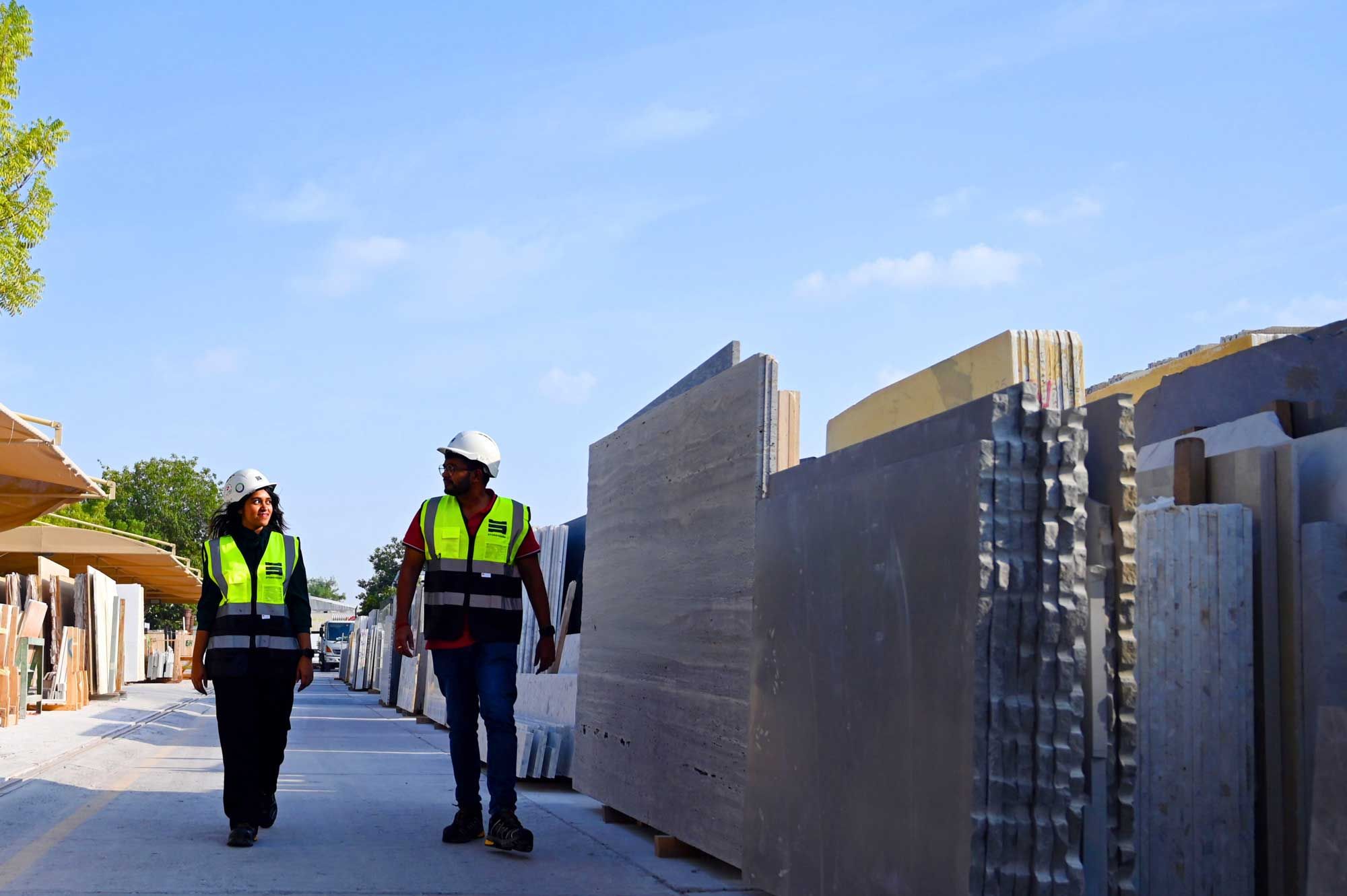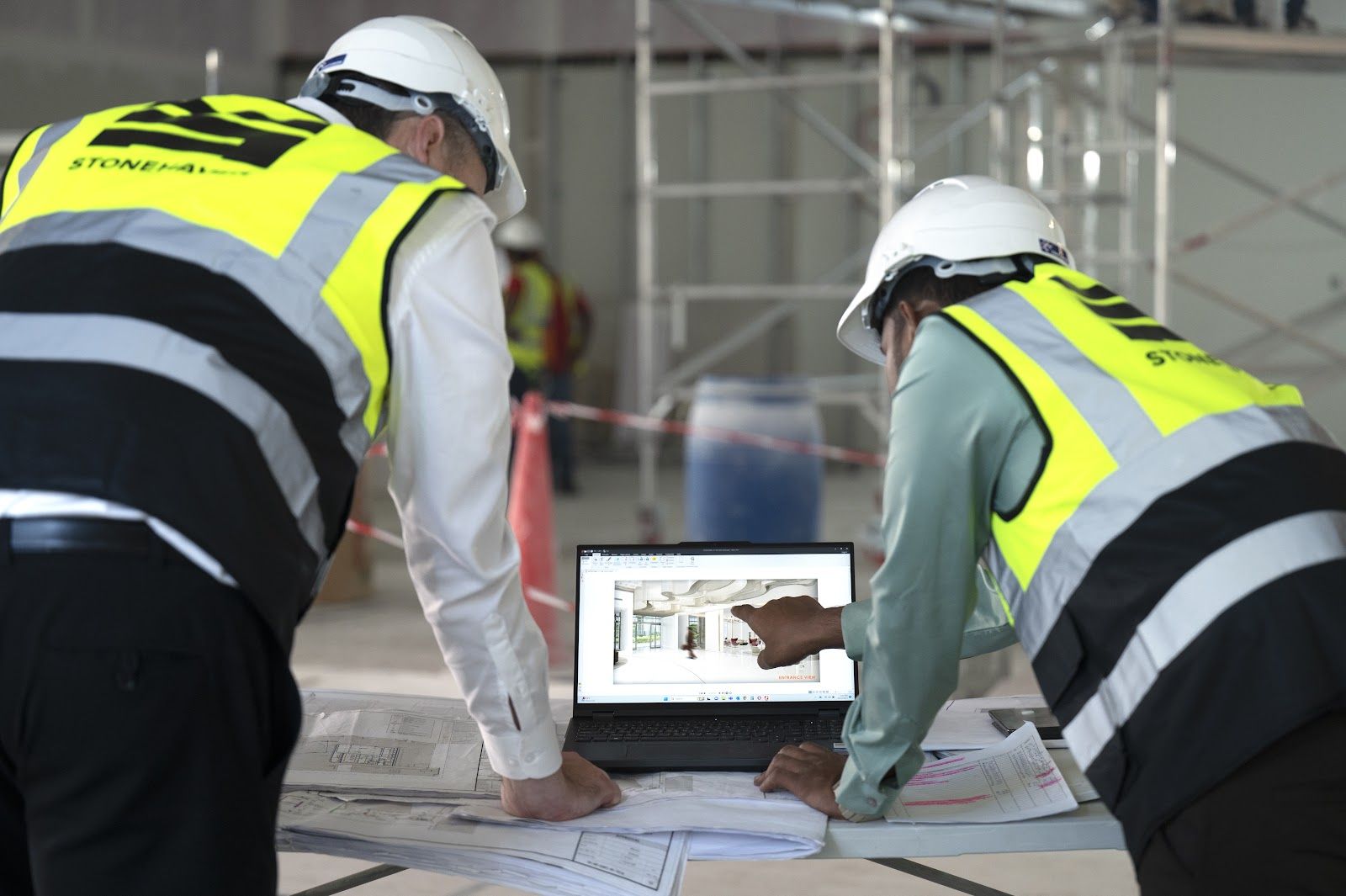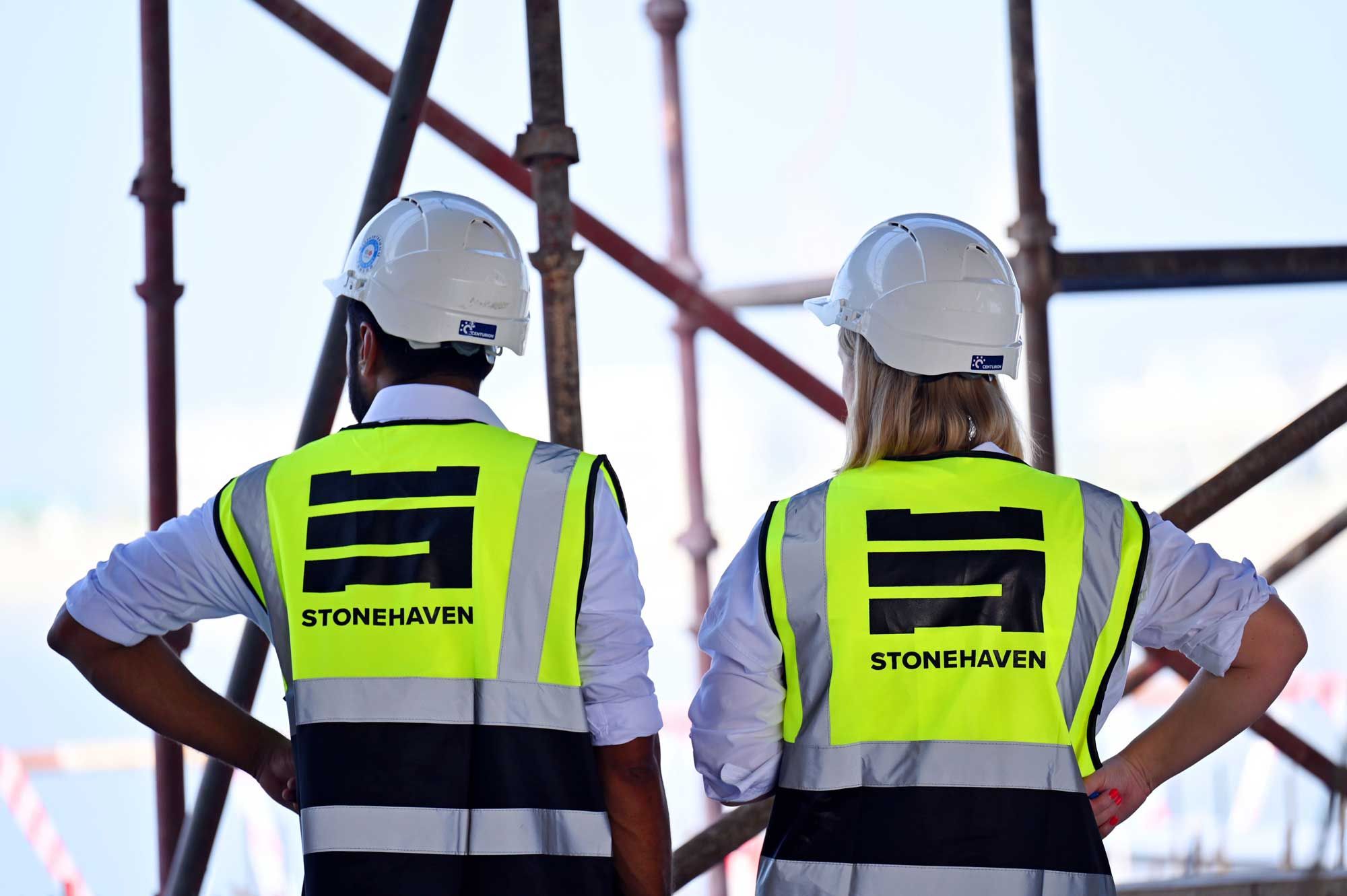The construction industry is full of moving parts. Consultants, contractors, regulators, suppliers, approvals, materials, design changes, and a project team constantly navigating the pressure of deadlines and budgets. When so much is happening at once, it becomes impossible to rely on instinct alone. This is where construction KPI metrics become the backbone of intelligent project delivery.
Think of KPIs as the early-warning system of a project: they reveal issues before they escalate, highlight opportunities before they disappear, and create a shared language that keeps project managers, developers, and consultants aligned. Without clear KPIs, construction can easily drift into uncertainty, scope creeps, delays harden into disputes, and budgets slip one unnoticed variation at a time.
Yet, when KPIs are set correctly and monitored consistently, they transform the construction lifecycle. Developers gain clarity, contractors gain direction, and project managers gain measurable control. Decisions become data-driven rather than reactive. Teams shift from firefighting to strategic delivery.
In this guide, we dive deep into the indicators that matter. Unpacking construction KPI examples, explaining what a KPI for construction projects really looks like, and breaking down the quality metrics that separate high-performing projects from the rest.
This is the playbook every construction leader needs today.
What is a Construction KPI Metric?
A Construction KPI Metric is a quantifiable measure that tracks how effectively a project is progressing against its strategy, budget, and timeline. While construction traditionally relied on experience and professional judgement, today’s large-scale developments whether residential towers, infrastructure networks, or commercial complexes, require measurable proof of performance. KPIs provide this.
Today’s large‐scale developments require measurable proof of performance. Yet reports state that 55% of organisations in 2025 don’t have access to real-time project KPIs, leaving a major gap in timely insight and control.

That is why these indicators operate as a diagnostic tool. They show what is working, what needs action, and where risk is emerging. More importantly, KPIs create consistency across the entire project team. Instead of assumptions or subjective assessments, construction KPI metrics offer hard evidence: actual progress against planned progress, true costs against budgets, real productivity against expected output.
A strong KPI system focuses on three core drivers:
- Efficiency – Are resources, workforce, and materials being used optimally?
- Quality – Are the deliverables meeting project specifications and standards?
- Risk – Are potential problems identified early enough to mitigate?
In essence, construction KPIs turn complex projects into measurable, manageable, and predictable undertakings. They take the guesswork out of construction and replace it with clarity. It is an essential upgrade for an industry where margins are tight and stakes are high.
What Are Some Examples of Construction KPIs?
There are hundreds of ways to measure a construction project, but only a handful drive real impact. Below are the most powerful construction KPI examples, rephrased and expanded for clarity, relevance, and modern construction management practices.
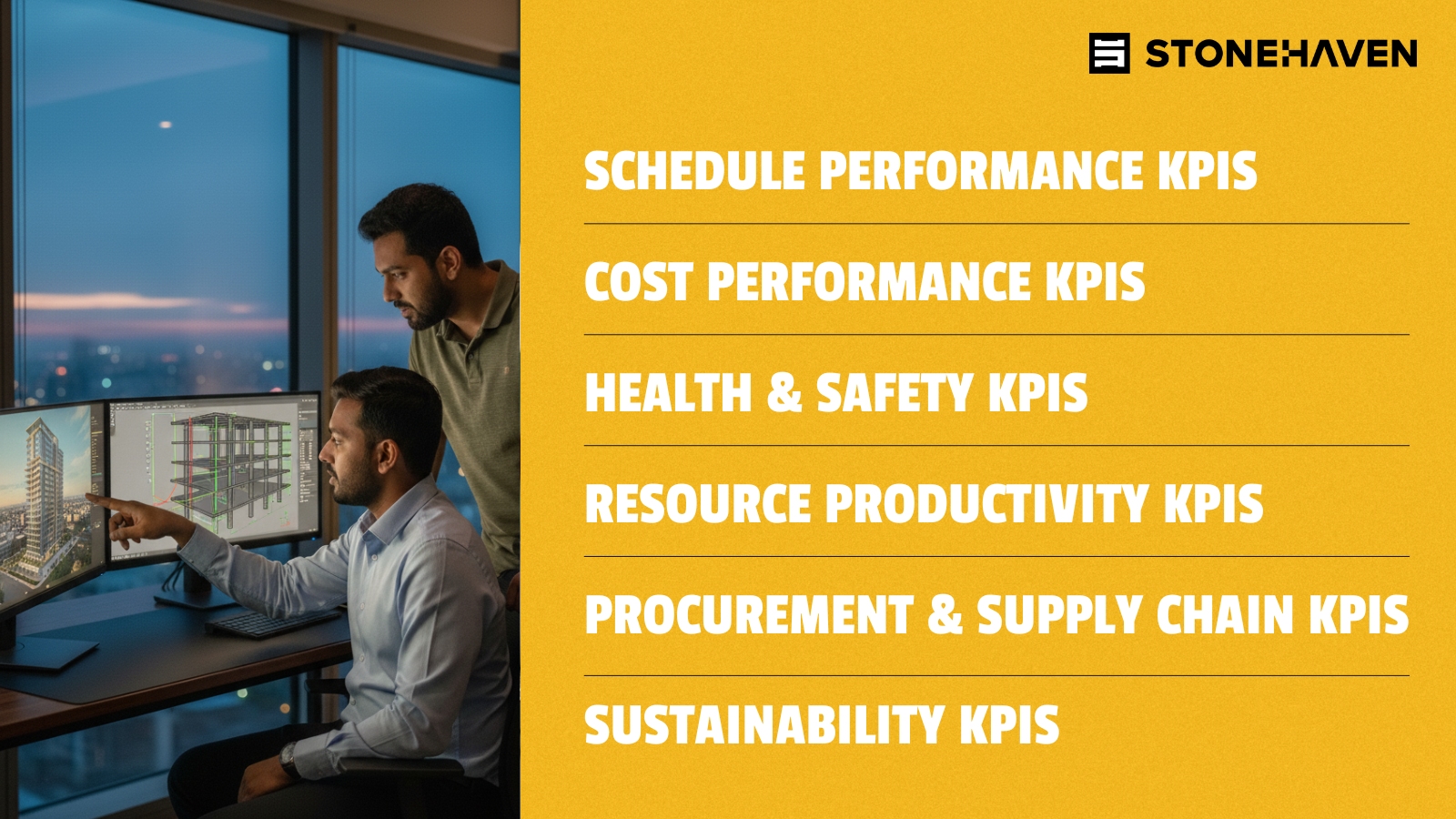
1. Schedule Performance KPIs
Time is the foundation of every construction project. Once lost, it is almost impossible to recover without additional cost.
a. Planned vs Actual Progress
Tracks how much of the project should be completed by a certain date compared with what has been achieved.
Why it matters: Exposes delays early. Protects against compressed programmes later.
b. On-Time Activity Completion Rate
Measures the percentage of tasks finished by their scheduled deadlines.
Why it matters: Helps assess subcontractor performance and identify bottlenecks in specific trades.
c. Average Delay per Activity
Shows how frequently activities slip and by how much.
Why it matters: Reveals systemic scheduling issues rather than isolated delays.
2. Cost Performance KPIs
Budgets rarely fail overnight, they erode gradually. These KPIs act as tripwires.
a. Cost Variance (CV)
Compares planned cost with actual cost.
Why it matters: Indicates whether a project is overspending before it becomes unmanageable.
b. Cost Performance Index (CPI)
A ratio of earned value to actual cost.
Why it matters: A CPI below 1 signals inefficiency or overspending. Above 1 indicates strong cost control.
c. Forecast at Completion (FAC)
Predicts the final project cost based on current data.
Why it matters: Allows early intervention before overruns lock in.
d. Percentage of Approved Variations
Tracks how many variations have been approved relative to total submissions.
Why it matters: Shows whether scope changes are distorting budgets.
3. Health & Safety KPIs
A construction site is one of the most risk-prone environments. Strong HSE KPIs protect people and prevent costly stoppages.
a. Lost Time Injury Frequency Rate (LTIFR)
Measures injuries that result in lost workdays.
Why it matters: An essential indicator of site safety practices.
b. Near-Miss Reporting Rate
Tracks how many unsafe incidents were reported but didn’t result in injury.
Why it matters: Healthy reporting cultures reduce major accidents.
c. Safety Audit Compliance
Shows how consistently site teams follow HSE requirements.
Why it matters: Indicates the true effectiveness of safety programmes.
4. Resource Productivity KPIs
If workers or subcontractors are performing below expected productivity levels, the entire project feels it.
a. Labour Productivity
Output per worker, often measured in units per hour.
Why it matters: Reveals contractor efficiency and supports resource planning.
b. Equipment Utilisation Rate
Percentage of time plant and machinery are in productive use.
Why it matters: Exposes idle equipment and unnecessary costs.
c. Rework Hours
Tracks hours spent correcting work that didn’t meet standards.
Why it matters: Rework is one of the biggest contributors to wasted project resources.
5. Procurement & Supply Chain KPIs
Inadequate supply chain management is a key cause of construction delays.
a. Material Delivery Timeliness
Measures whether materials are delivered on schedule.
Why it matters: Prevents downtime on site and supports sequencing.
b. Lead Time Accuracy
Compares estimated vs actual procurement durations.
Why it matters: Ensures QSs and planners use realistic assumptions.
c. Supplier Performance Rating
Evaluated across cost, speed, quality, and reliability.
Why it matters: Encourages accountability and improves future procurement decisions.
6. Sustainability KPIs
The modern construction sector increasingly prioritises environmental responsibility.
a. Waste Diversion Rate
Percentage of site waste that is recycled instead of landfilled.
Why it matters: Reduces environmental impact and may satisfy regulatory requirements.
b. Embodied Carbon Tracking
Measures carbon footprint across materials and activities.
Why it matters: Essential for green building certifications and ESG reporting.
c. Energy Consumption During Construction
Tracks energy usage across equipment and site operations.
Why it matters: Cost and emissions efficiency.
Together, these construction KPI examples offer a robust framework that supports predictable, efficient, sustainable project delivery.
What are the Quality Metrics in Construction?
Quality is one of the pillars of project success. When quality dips, repairs multiply, disputes escalate, and long-term asset performance declines. Quality metrics ensure that what is being built matches what was promised.
Below are the essential quality KPIs in any construction environment:
1. Defects per Inspection
Tracks the number of non-conformities found during inspections.
Why it matters: Helps determine whether workmanship meets project specifications.
2. Right-First-Time Rate
Measures how often work passes inspection without requiring rework.
Why it matters: A high RFT rate signals skilled labour and strong supervision.
3. Rework Cost Percentage
Percentage of total project cost attributed to rework.
Why it matters: Rework often results from poor coordination or supervision.
4. Snag Closure Rate
Tracks how quickly snags are resolved once identified.
Why it matters: Ensures handover is smooth and reduces client dissatisfaction.
5. Compliance with Testing & Commissioning Protocols
Monitors whether systems are tested and commissioned according to standards.
Why it matters: Essential for safety and long-term performance.
6. Material Quality Compliance
Measures whether supplied materials meet approved specifications.
Why it matters: Prevents failures that may only surface years later.
7. Inspection Coverage Percentage
Shows how much of the work has been formally inspected.
Why it matters: Ensures no part of the project escapes quality review.
Quality metrics protect the value of the asset long after handover. In an industry where reputations are built slowly and lost quickly, robust quality KPIs are non-negotiable.
How Do You Set a KPI for a Project?
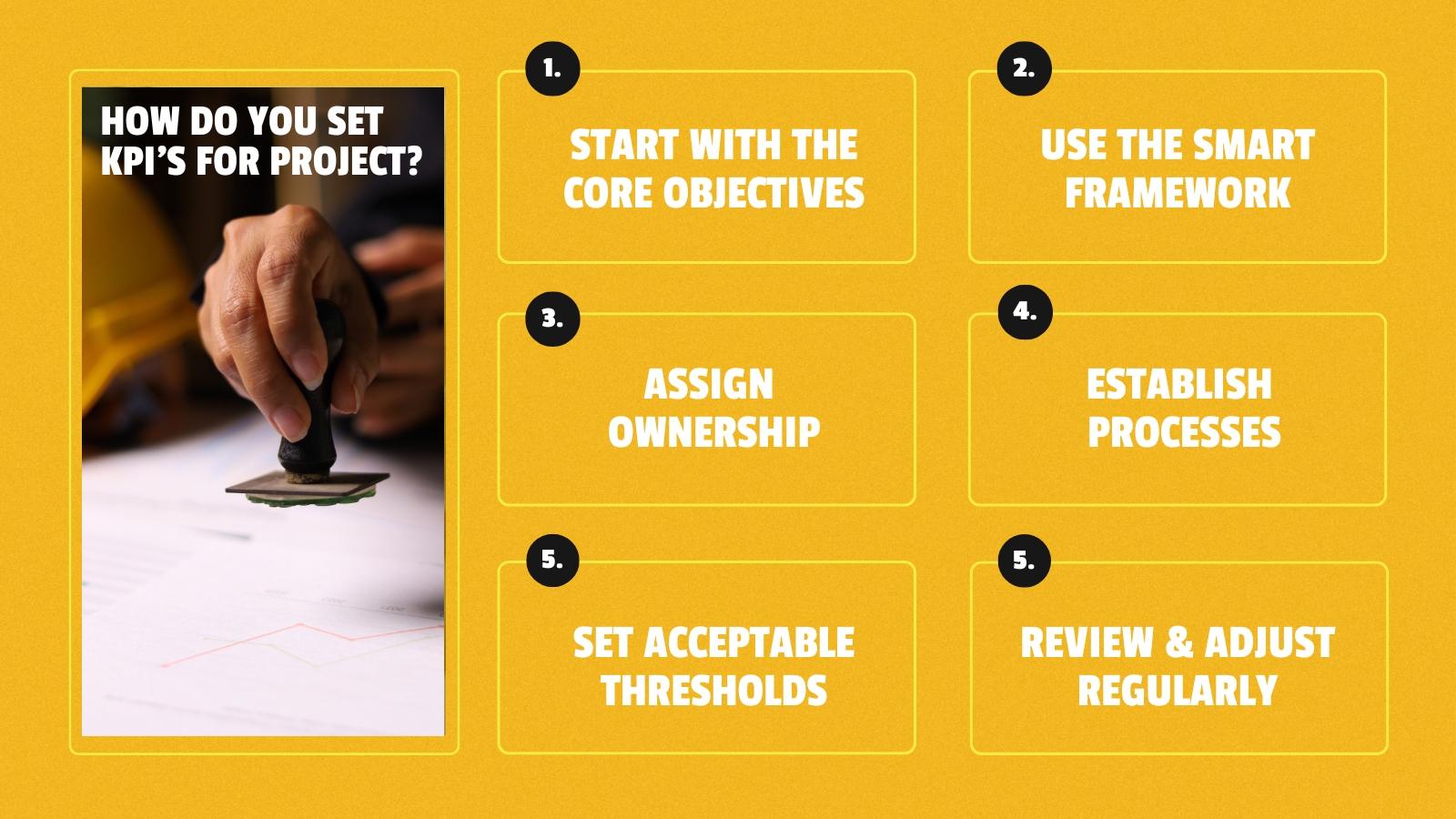
Setting strong KPIs requires more than choosing numbers. It demands alignment, clarity, and strategic intention. Here’s how to set meaningful KPIs for construction projects.
1. Start with the Project’s Core Objectives
Define what success genuinely looks like. Is the priority speed? Cost efficiency? Quality? Safety? Sustainability? KPIs must reflect these priorities.
2. Use the SMART Framework
Every KPI should be:
- Specific – Clear and unambiguous
- Measurable – Based on quantifiable data
- Achievable – Realistic given resources
- Relevant – Connected to project goals
- Time-Bound – Tracked within a defined period
3. Assign Ownership
Each KPI must have a responsible person or team. Without ownership, KPIs become passive metrics instead of active tools. Ownership should also include authority to take corrective action, not just accountability.
4. Establish Data Collection Processes
Determine how each KPI will be measured by progress reports, inspections, software tools, financial systems, or site logs.
5. Set Acceptable Thresholds
A KPI without a target is meaningless. For example:
- RFT Rate Target: 90%+
- Cost Variance Threshold: ±5%
- RFI Response Time: 48 hours
6. Review and Adjust Regularly
KPIs evolve with the project. As new risks arise or scopes shift, the KPI framework should adapt.
When KPIs are set proactively and reviewed consistently, they give project teams an extraordinary advantage: predictability.
Conclusion
Construction projects succeed not by chance, but by control over time, cost, quality, safety, and decision-making. Construction KPI metrics offer this control in a form that is measurable, trackable, and universally understood. They reveal what instinct alone cannot: the health, efficiency, and trajectory of a project long before any issue becomes critical.
Whether you’re managing a tower, a villa community, an airport precinct, or infrastructure network, the right KPI framework ensures performance is transparent and predictable. These indicators are more than numbers; they’re the story of the project told with clarity, accuracy, and accountability.
In a construction landscape becoming more complex by the day, KPIs remain one of the simplest and most powerful tools available. When used well, they transform project delivery from reactionary to strategic, from uncertain to controlled, from average to exceptional.
About Us
Stonehaven is a leading construction consultancy delivering cost management, project management, engineering support, and development advisory services across the UAE, Saudi Arabia, and the wider GCC. Our mission is simple: to help developers, investors, and contractors build with accuracy, confidence, and measurable performance.
Our expertise spans the entire project lifecycle from early feasibility studies and cost planning to project execution, commercial management, and final account closure. We pride ourselves on blending deep technical knowledge with modern digital tools, allowing our clients to make smarter, faster decisions using reliable insight.
If you’re planning a project and want expert support from one of the GCC’s fastest-growing consultancies, explore our services or speak with our specialist teams today at www.stonehaven.ae.










